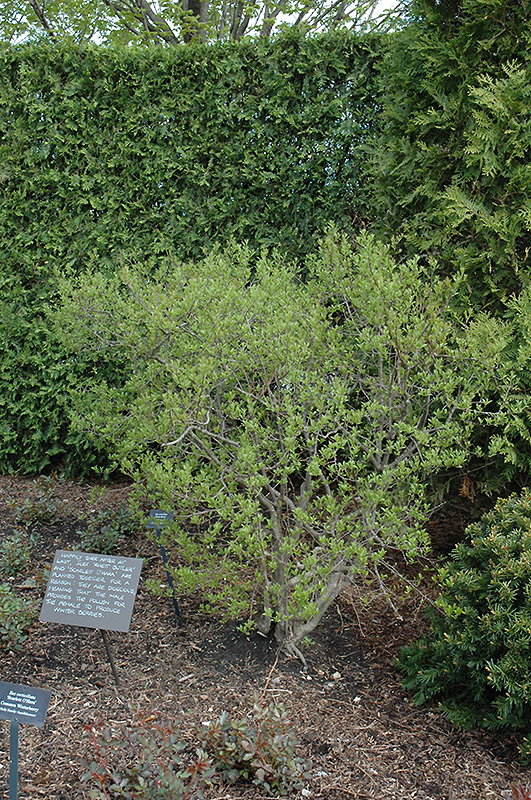Rhett Butler Winterberry*
Ilex verticillata 'Rhett Butler'
* This is a "special order" plant - contact store for details
Height: 10 feet
Spread: 10 feet
Sunlight:
![]()
![]()
Hardiness Zone: 4a
Other Names: Black Alder
Description:
This shrub is prized for its abundance of bright red berries which last through winter, showiest on bare plants; upright growth habit, suckers into colonies; requires moist to wet highly acidic soils, good for problem areas; excellent when massed
Ornamental Features
Rhett Butler Winterberry is primarily grown for its highly ornamental fruit. It features an abundance of magnificent red berries from mid fall to late winter. It has dark green deciduous foliage. The pointy leaves do not develop any appreciable fall color.
Landscape Attributes
Rhett Butler Winterberry is a dense multi-stemmed deciduous shrub with an upright spreading habit of growth. Its average texture blends into the landscape, but can be balanced by one or two finer or coarser trees or shrubs for an effective composition.
This shrub will require occasional maintenance and upkeep, and is best pruned in late winter once the threat of extreme cold has passed. It is a good choice for attracting birds to your yard. Gardeners should be aware of the following characteristic(s) that may warrant special consideration;
- Suckering
Rhett Butler Winterberry is recommended for the following landscape applications;
- Mass Planting
- Hedges/Screening
- General Garden Use
- Naturalizing And Woodland Gardens
Planting & Growing
Rhett Butler Winterberry will grow to be about 10 feet tall at maturity, with a spread of 10 feet. It tends to be a little leggy, with a typical clearance of 2 feet from the ground, and is suitable for planting under power lines. It grows at a medium rate, and under ideal conditions can be expected to live for 40 years or more. This is a female variety of the species which requires a male selection of the same species growing nearby in order to set fruit.
This shrub does best in full sun to partial shade. It prefers to grow in moist to wet soil, and will even tolerate some standing water. It is very fussy about its soil conditions and must have rich, acidic soils to ensure success, and is subject to chlorosis (yellowing) of the foliage in alkaline soils. It is somewhat tolerant of urban pollution. Consider applying a thick mulch around the root zone in winter to protect it in exposed locations or colder microclimates. This is a selection of a native North American species.
* This is a "special order" plant - contact store for details
